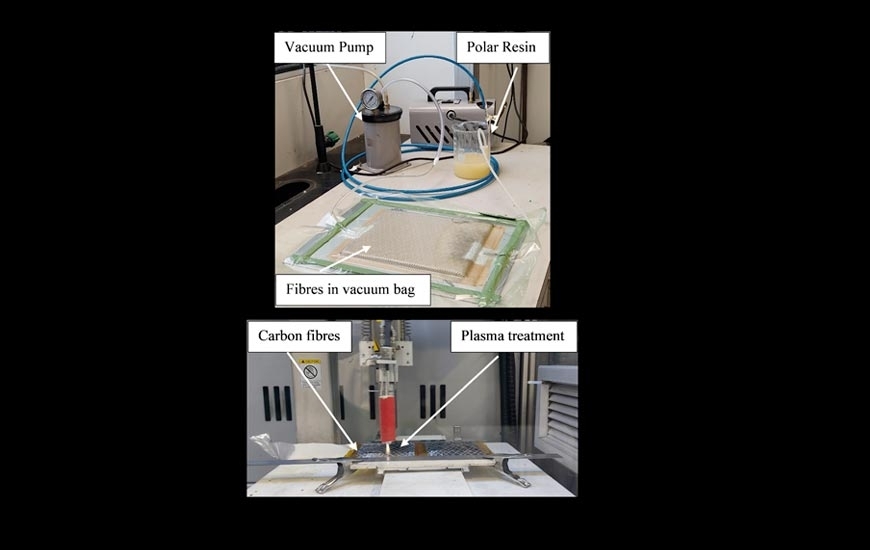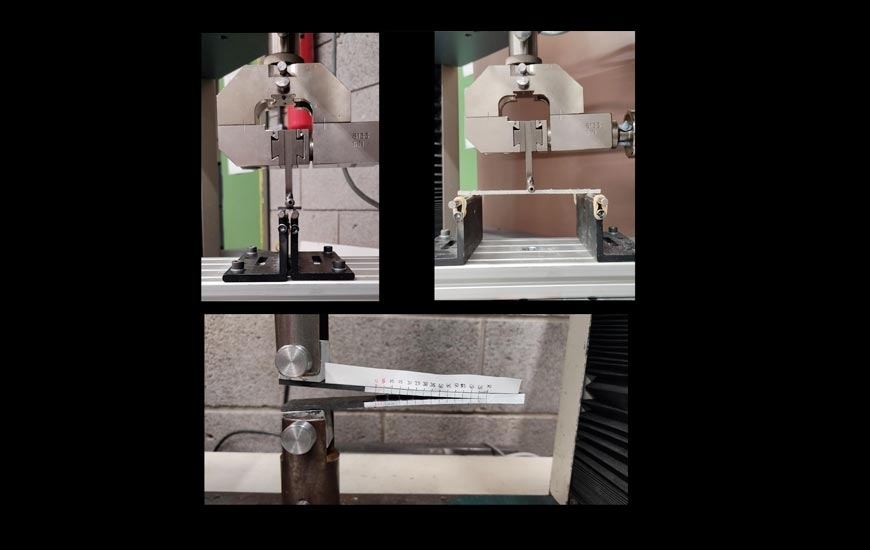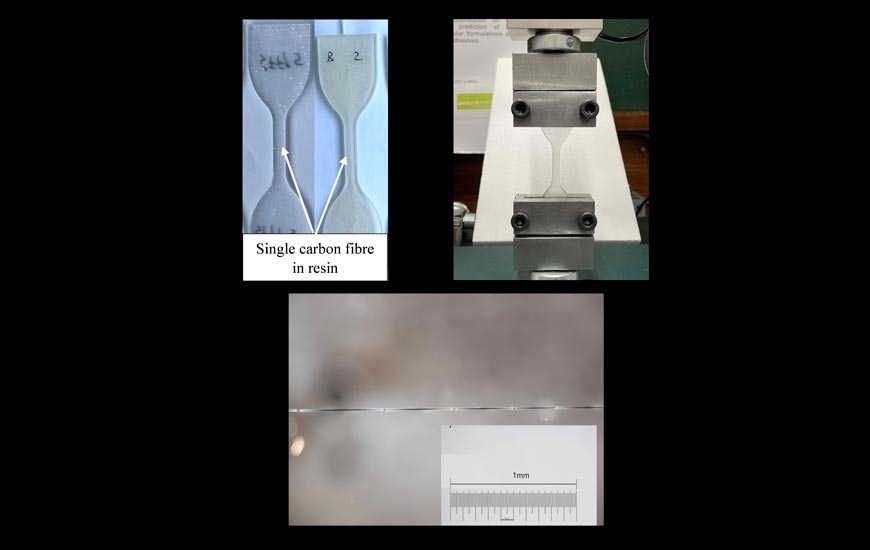The growing interest in the environment and sustainability issues has driven researchers to substitute conventional synthetic fibre composites with biobased composites. Remarkable progress is noticed in green materials with the presence of biocomposites research. The industrial and research communities seek eco-friendly, reusable, and recyclable materials. The composite materials comprise the fibre reinforcement that acts as a load-carrying agent and the resin materials that hold the reinforcement together and aids in transferring the load to the fibres.
The biocomposites developed from the natural fibres and bio-resin gained much attention, as they can deliver considerable properties at a reasonable cost. The biocomposites with their resin and reinforcement derived from natural products can be effortlessly recycled or disposed of once the service period is over, without damaging the environment. Common biofibres are jute, flax, hemp, coir, cotton, kenaf, basalt, wood, sisal, etc. These can replace synthetic glass, carbon fibres, etc. Some examples of biobased thermoplastic polymers are Polyhydroxyalkanoates (PHA), polylactic acid (PLA), polyethylene terephthalate (PET) etc. and biobased thermoset polymers are polyesters, epoxy etc.
A recent survey declares that the global market of biocomposites reached a compound annual growth rate of 11.8% from 2016 to 2024 (1). In 2016 the biocomposites market registered its value as USD 4.46 billion; the construction sector itself holds 56%. The market forecast predicts the market size to reach USD 10.89 billion by 2024. Recent years have witnessed biocomposites for automotive components, especially in European carmakers. According to the EURO 6 norms, the tax rates are higher for vehicles that generate 95 g/km of CO2 emission. Thus, weight reduction is a serious factor to be considered in automotive. Substituting heavier parts with biocomposites can significantly reduce the vehicle's weight, further reducing CO2 emission levels. In other words, biocomposites support the European automobile manufacturing association and the European commission's goals in reducing CO2 emission. The European Directive 2000/53/EC also targets recycling 95% of the vehicle's weight. The biocomposites are suitable for secondary applications such as automotive interiors, sport, leisure, packing, electronics, building interiors, etc. The highlighting advantages of biocomposites over conventional synthetic composites are the high specific strength, high health safety, CO2 neutrality, good damping properties, thermal insulation, high acoustic insulation, low density, less production energy, and lightweight.
With its lightweight nature, biocomposites can replace most synthetic fibre composites in non-structural components of automobiles. The advanced composite body is 50-67% lighter than a similar steel-sized auto body, and it is 40-55% lighter than the aluminum auto body. The future electric vehicles seriously look forward to lightweight materials that can lower the curb weight, improving the maximum range of travel. However, the inherent moisture absorption and the low mechanical properties limit them to the interior automotive components alone, such as door panels, storage cabins, mats, dashboards, etc. Some leading car makers have already used green composites to make the interior vehicle components. Audi A2 midrange car manufactured the door trim panels from hybrid flax sisal fibre reinforced polyurethane composites. Toyota made the eco-plastic made from sugar cane for its CT 200 model, whereas the Mitsubishi Motors made floor mats made from PLA and nylon fibers.
Similarly, Ford selected wheat straw as reinforcement for the storage bin and inner lid in its 2010 Flex crossover vehicle. In 1996 Mercedes-Benz developed jute fibre reinforced epoxy composites for door panels. The Mercedes-Benz Travego travel coach model developed the flax reinforced polyester composite for the engine and transmission enclosures for sound insulation in 2000. Mercedes-Benz A-Class patented the use of abaca fibre reinforced polypropylene composite for its two-door coupe vehicle in 2004. In addition, biocomposites also have a good scope in tissue engineering, advanced electronic devices, sensors, electromagnetic shielding, thermoelectric systems, solar cells, packing, bio nanocomposites for drug delivery, etc.
The biocomposites also have some serious drawbacks such as poor moisture resistance, flammability, fibre matrix incompatibility, highly anisotropic properties, difficult processability, etc. that can hinder them from engineering applications. The origin of natural fibres can also be a deciding factor for the properties and durability of biocomposites. The presence of cellulose, hemicellulose, lignin, pectin etc., makes the biofibres hydrophilic resulting in poor fibre matrix bonding when associated with hydrophobic polymers. These factors result in poor mechanical and thermal properties, making them unsuitable for structural applications. The research on biocomposites thus focuses on overcoming these issues by adopting surface modification, hybridization, nanoengineering, etc. The research studies the understanding and knowledge occurring on the structural and morphological levels during the approaches above that are vital to broadening the applications. The surface modification includes physical, chemical, and biological treatments that alter the carboxyl and hydroxyl groups in the fibres. These techniques can roughen the surface topology and develop strong covalent bond formation.
Recent literature indicates that biobased thermoplastic composites are suitable for high-performance engineering applications. Thermoplastic polymers such as polyvinyl chloride (PVC), polypropylene (PP), polyethylene (PE), acrylonitrile-butadiene-styrene (ABS), polyether–ether ketone (PEEK), and nylon are the biobased resins in this category. Thermoplastic polymers offer more design flexibility and ease of processing when compared to thermoset resins. The thermoset polymers also create end of life issues and are not environmentally friendly. For these reasons, biobased composites involving biopolymers from biological resources are considered. Unlike the synthetic polymer resins, the biofibre and biobased resins with identical properties result in superior fibre matrix compatibility and adhesion. Low mechanical and thermal properties and long-term durability are still the hurdles to be solved before commercializing them. Moreover, most of the biobased resins and biofibres are unstable at higher temperatures (more than 200 ℃) and are unsuitable for processing at a higher temperature. Yet, identifying the exact processing parameters, fibre, matrix, and interface properties, etc., requires continuous research.
Recycling is considered an important method that can limit finite resources and manage waste disposal issues. Thermal, mechanical, and chemical recycling techniques are usually used to recycle thermoplastic resin composites. The thermal and mechanical recycling degrades the fibre properties, destroying the matrix. Chemical treatment using chemical dissolution reagents allows the clean fiber to retain its properties and the matrix with its valuable monomers. The efficiency of the chemical dissolution process depends on the organic resin. Prof. Cicala et al., in their studies (2), concluded that Connora recycling using cleavable amines could produce better recycling outputs.
A thermoplastic epoxy resin with amine hardener is considered for the present research. The developed resin system is a fully recyclable biobased resin. The components added for the formulation of the resin system are optimized from the outcome of mechanical and thermal studies. The developed resin is further utilized to fabricate fibre reinforced composite material by vacuum-assisted resin infusion technique as shown in fig.1. The research study also includes the fibre surface treatment (plasma treatment) that aims to improve the adhesion of fibre and matrix. The mechanical characterisation such as three point bending test, interlaminar shear strength and the Double cantilever beam test (Mode I interlaminar fracture toughness) of the fibre reinforced composites are evaluated. Figure 2 represents the images of the mechanical characterisations. The study also evaluates the fibre matrix interface adhesion by performing the single fibre fragmentation test as illustrated in figure 3.
The project is expected to contribute to the applications that need a complete recyclable composite system that can be reused once the lifetime is over. The developed biocomposites are aimed for industrial applications such as automotive interiors and structural applications with the main focus on recyclability after its service period to ensure environmental friendliness.
For further information contact Prof. Gennaro Scarselli (gennaro.scarselli@unisalento.it)
*Department of Engineering for Innovation, University of Salento (Lecce), Italy
**School of Materials and Mechanical Engineering, UCD (Dublin), Ireland
____________________
References
(1) Gurunathan T, Mohanty S, Nayak SK. A review of the recent developments in biocomposites based on natural fibres and their application perspectives. Compos Part A Appl Sci Manuf 2015;77:1–25. https://doi.org/10.1016/j.compositesa.2015.06.007.
(2) Cicala, G., et al.. Hybrid composites manufactured by resin infusion with a fully recyclable bioepoxy resin. Composites Part B: Engineering 132 (2018): 69-76.
-

-
16 March 2022

























